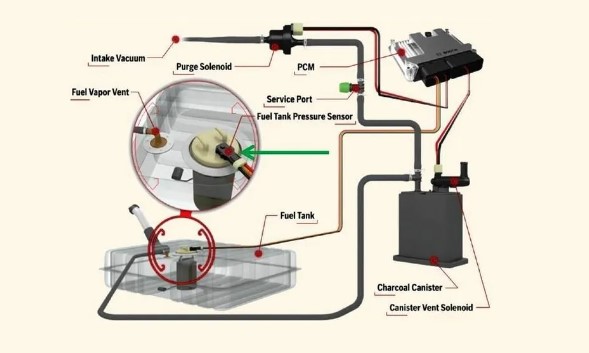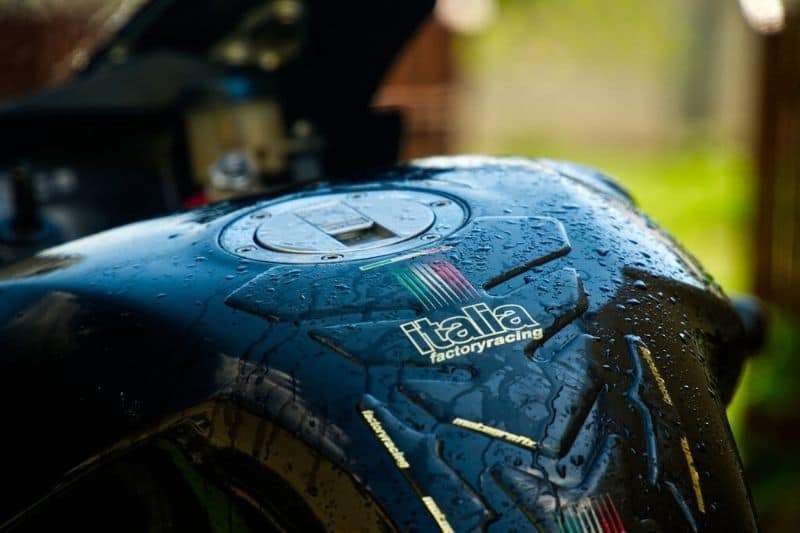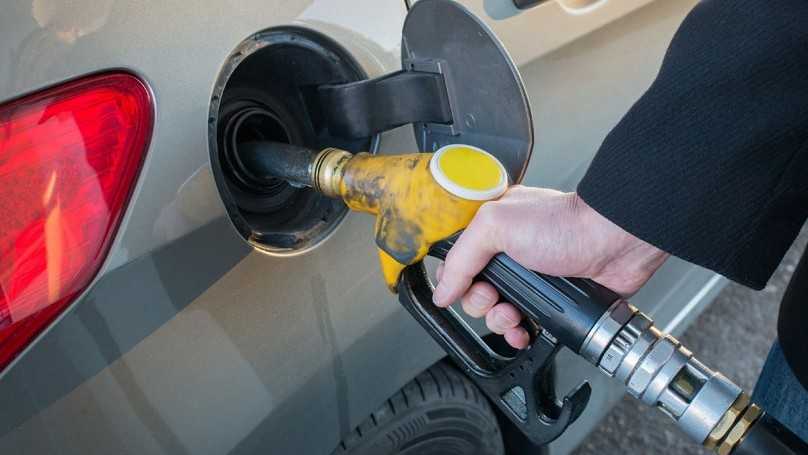Can You Overfill A Gas Tank

The familiar click of the gas pump nozzle signals the near completion of a refueling task for millions daily, but some drivers persist in squeezing in that last bit of fuel, attempting to top off their tanks. This practice raises a critical question: Can you actually overfill a gas tank, and if so, what are the potential consequences?
While seemingly innocuous, overfilling a gas tank can lead to a range of problems, from damaging your vehicle's evaporative emissions control system (EVAP) to posing environmental risks and even potentially creating a fire hazard. Understanding the mechanics of modern fuel systems and the purpose of the EVAP system is key to appreciating the dangers of overfilling.
The Role of the EVAP System
The EVAP system, mandated by environmental regulations across North America and other developed countries, is designed to capture fuel vapors that naturally evaporate from the gas tank. These vapors are then stored in a charcoal canister until the engine is running, at which point they are drawn into the intake manifold and burned, preventing them from escaping into the atmosphere as pollutants.
Overfilling a gas tank can force liquid fuel into the EVAP system, which is only designed to handle vapor. This can saturate the charcoal canister, rendering it ineffective and potentially causing damage to other components of the system.
Potential Damage and Consequences
When liquid fuel enters the EVAP system, the charcoal canister can become clogged, restricting airflow and potentially leading to a malfunctioning check engine light. This can also result in poor engine performance and reduced fuel efficiency.
According to mechanics at AAA Approved Auto Repair facilities, replacing a damaged EVAP system can cost hundreds of dollars, a repair easily avoided by simply stopping when the pump clicks off.
Beyond the mechanical damage to the vehicle, overfilling also poses environmental concerns. Excess fuel can spill onto the ground, contaminating soil and potentially seeping into groundwater sources. Even small amounts of spillage can contribute to air pollution as the fuel evaporates.
Environmental and Safety Concerns
The Environmental Protection Agency (EPA) emphasizes the importance of proper fueling techniques to minimize pollution. Overfilling contributes to volatile organic compounds (VOCs) entering the atmosphere, which are a major component of smog and can contribute to respiratory problems.
Furthermore, spilled gasoline creates a slip hazard at the gas station and poses a fire risk. Gasoline is highly flammable, and even a small amount of spilled fuel can ignite from a spark or static electricity.
While rare, a significant spill could potentially overwhelm the station's safety systems, leading to a larger and more dangerous situation.
The Click is the Key
Gas pumps are designed with an automatic shut-off mechanism that stops the flow of fuel when the tank is nearly full. This mechanism relies on a sensor that detects when fuel rises to a certain level in the filler neck.
The 'click' you hear is the pump signaling that the tank is full, leaving room for vapor expansion and preventing fuel from entering the EVAP system.
Ignoring the click and attempting to add more fuel bypasses this safety feature and increases the risk of overfilling. Most manufacturers strongly advise against topping off the tank after the initial shut-off.
Human Element and Habits
Why do people overfill their tanks despite the potential risks? Some believe they are getting more for their money by filling the tank completely, while others may simply be in a hurry and not paying close attention.
Some drivers are under the misconception that topping off will improve fuel economy, but the minimal amount of extra fuel added rarely makes a noticeable difference. In fact, the potential damage to the EVAP system can actually decrease fuel efficiency in the long run.
One driver from Ohio, Susan Miller, admitted to routinely topping off her tank until she experienced a check engine light and costly repairs. "I used to think I was being smart, getting every last drop. Now I realize it was a foolish habit that cost me money and probably harmed the environment," she said.
Best Practices for Refueling
To avoid overfilling, always stop fueling when the pump clicks off the first time. Avoid squeezing the handle repeatedly to add more fuel. If the pump shuts off prematurely, try repositioning the nozzle or using a different pump.
Be mindful of your surroundings and avoid distractions while refueling. Pay attention to the pump and stop immediately when it clicks. Clean up any spills promptly and dispose of paper towels properly.
Remember, the small amount of extra fuel gained by topping off is simply not worth the potential cost and environmental impact.
Conclusion
While the temptation to squeeze in a few extra cents worth of gasoline might seem harmless, the potential consequences of overfilling a gas tank are significant. From damaging your vehicle's EVAP system to contributing to pollution and creating a fire hazard, the risks far outweigh any perceived benefit.
By understanding the mechanics of modern fuel systems and adopting proper refueling habits, drivers can protect their vehicles, the environment, and their wallets. The best advice is simple: stop when the pump clicks, and leave the topping off to the professionals – the engineers who designed the system to work that way.
Ultimately, responsible fueling practices contribute to a safer and cleaner environment for everyone.




![Can You Overfill A Gas Tank What Happens If You Overfill Your Car's Gas Tank? [Simple Guide]](https://autochimps.com/wp-content/uploads/2022/05/Can-You-Pump-Gas-With-The-Car-On-1024x576.jpg)











![Can You Overfill A Gas Tank What Happens If You Overfill Your Car's Gas Tank? [Simple Guide]](https://autochimps.com/wp-content/uploads/2022/11/What-Happens-If-You-Overfill-Your-Cars-Gas-Tank-768x432.jpg)
![Can You Overfill A Gas Tank What Happens If You Overfill Your Car's Gas Tank? [Simple Guide]](https://autochimps.com/wp-content/uploads/2022/11/Filling-up-gas-in-a-car-768x396.jpg)
